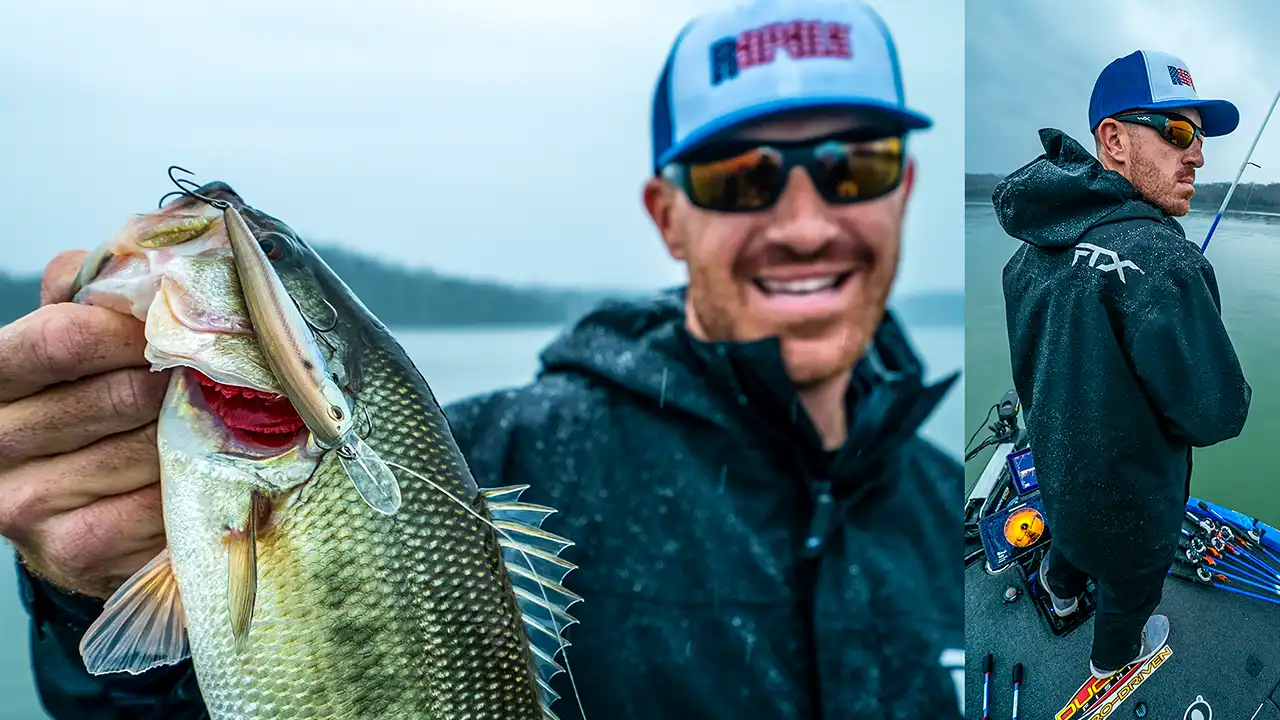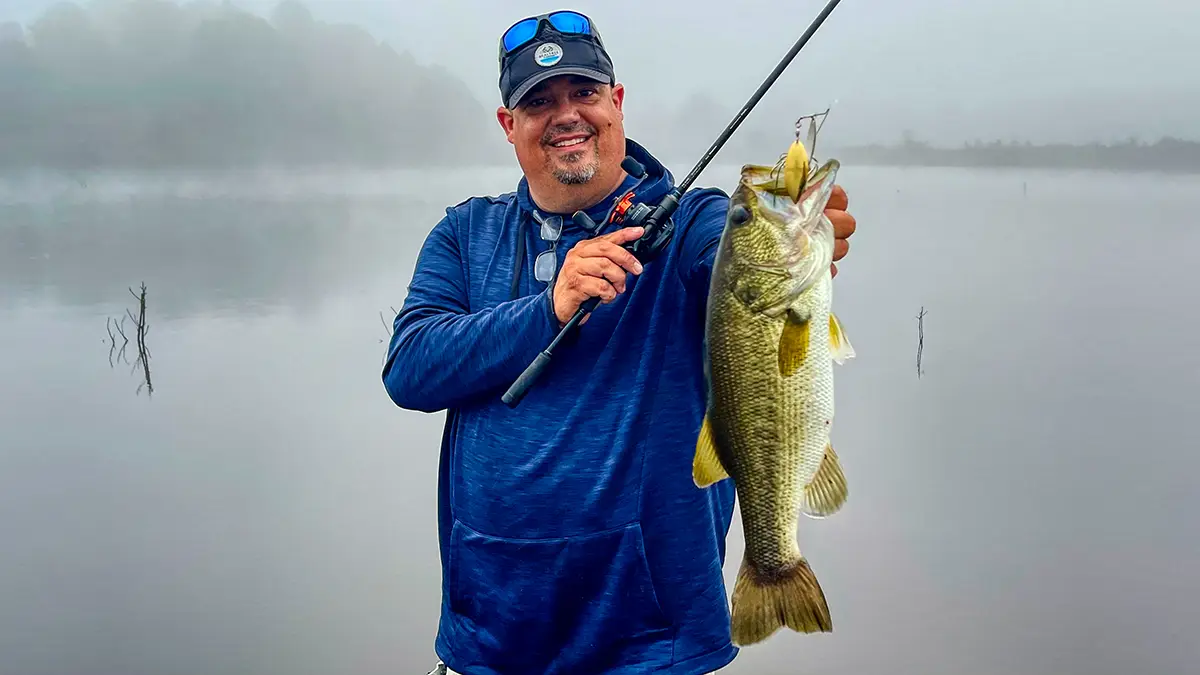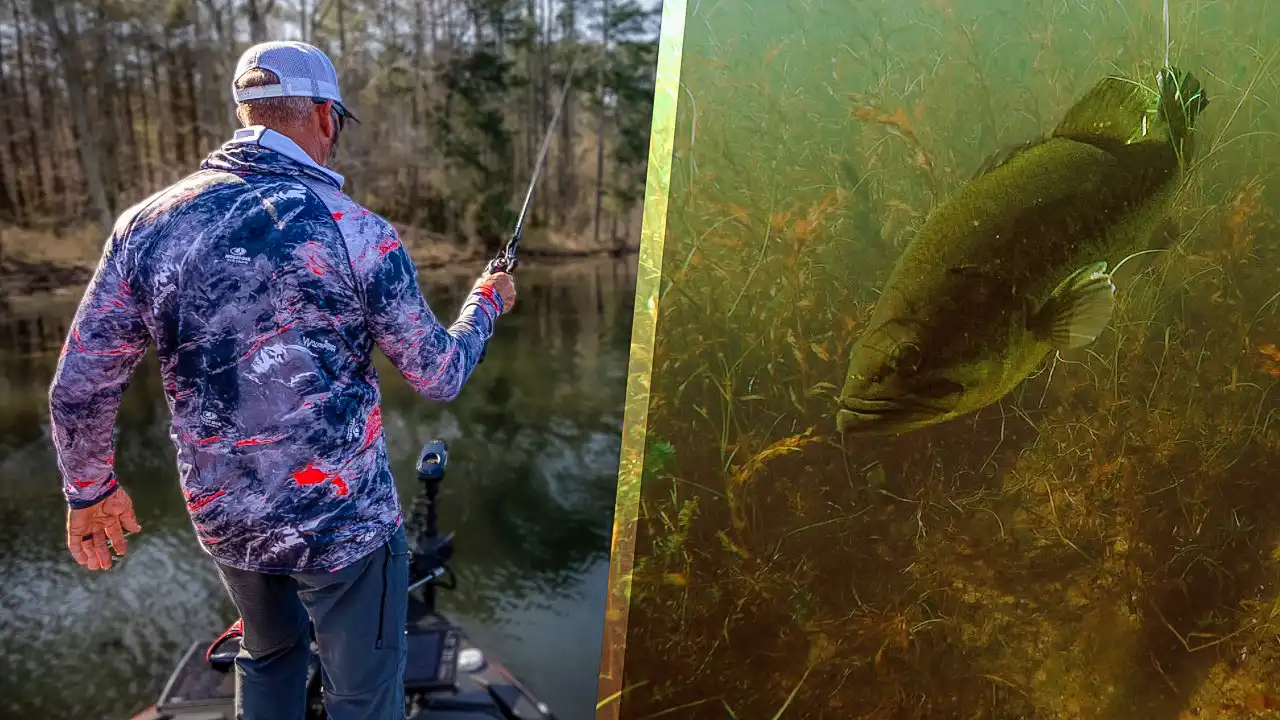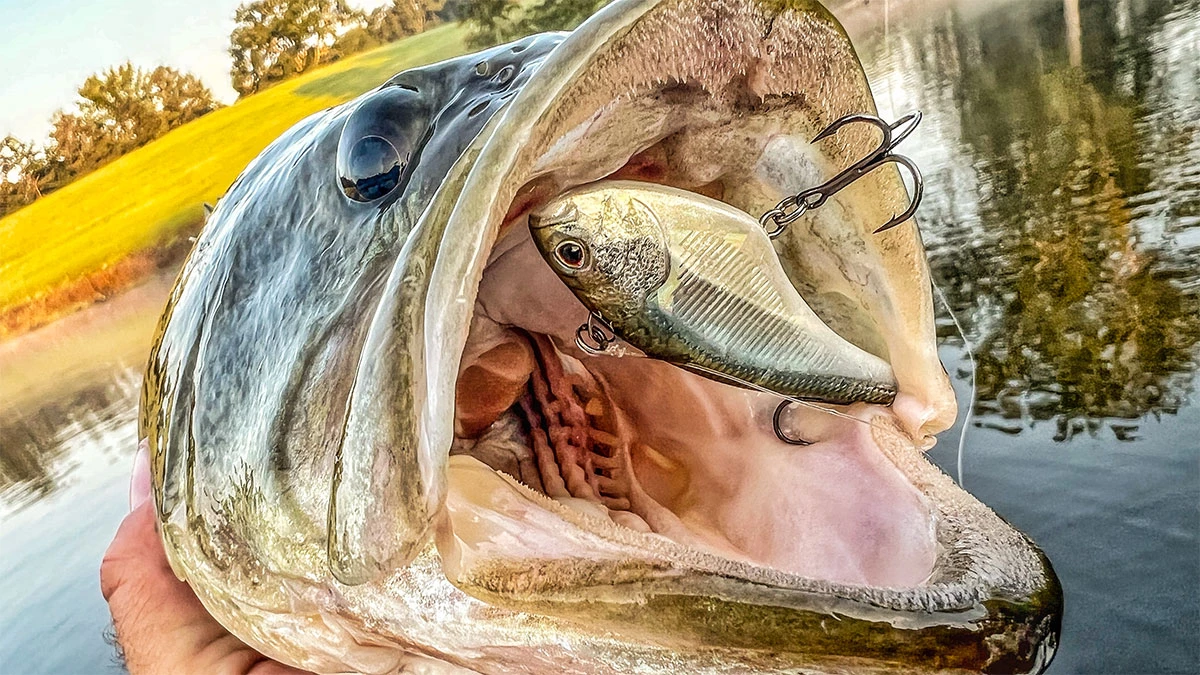It simply doesn’t get any better than prespawn bass fishing if you’re an angler. Although I like to bass fish throughout the entire year, it’s hard to wipe the smile off my face for these few months. The big females are moving shallow by the day and if you hit it just right, you’ll have a few trips when it seems like they’ll bite just about anything you put in front of their faces. With that being said, this is the time to catch your personal-best bass regardless of your skill level. It doesn’t matter if you’ve fished for a few months or 50 years; these dang bass right now are huge and dumb as a bag of rocks.
Oddly enough, however, I used to have a rough time putting the proverbial puzzle together throughout the prespawn period. I’d still catch some good ones most days but I never really had those monster days I’d see others have. While everyone else was out there catching 20 pounds each evening after class (this was when I was in college), I’d have about 15 pounds with a 6-pound big fish. Nothing to complain about, for sure, but still frustrating that I couldn’t quite get on the right bite.
A lot has changed since those days for me and I’ve had an opportunity to learn from some of the best bass anglers in the world. I’ve logged countless hours on the water throughout the prespawn period and as I was rigging tackle in the shop the other night, I thought of the three biggest mistakes I seemed to always make when I was initially struggling with this bite.
The next few minutes might actually change the way you view and approach prespawn bass fishing.
Mistake No. 1: Not inspecting every single fish

It’s easy to get excited and ahead of yourself this time of year; when those big prespawners move shallow the action can get hot and heavy within a matter of seconds. You’ll be hooked up, your buddy will be hooked up and all heck can break lose in a New York minute. It’s an absolute blast but I implore you to slow down and gather yourself as you’re unhooking and releasing your fish. Not just the big ones either—all of them.
This is a time when the bass you catch will give you a bunch of physical cues that will easily and almost definitively tell you what they’re doing. It’s important to stay ahead of the fish right now as they migrate from their deep, wintering holes to their eventual shallow spawning grounds. When you hit this just right by using these physical cues, you can intercept them during the aformentioned migration and revel in the best bass fishing you’ll find all year.
So what should you look for when it comes to prespawn bass? Each an every time you catch and unhook a bass, pay close attention to the three following characteristics.
The condition of the tail: Whether it’s a big bass or a little pecker snot (that’s my affectionate term for tiny bass), the condition of their tails can tell you a lot about what’s going on. Before releasing ‘em, check their tails for fresh sores or even dripping blood. This means the bass have been fanning shallow sandy areas in preparation for the spawn and you’re likely to find a bunch more if you stick to shallow, sandy areas water. If the tails are clean and free of sores, if means you’re probably ahead of the bass movement which is a good thing. The large majority of time, this means the bass have just started moving shallow and haven’t quite reached the shallow pockets yet. You’ll often find bass with clean tails on common staging areas such as primary and secondary points. When this happens, you can expect to enjoy these types of areas for several weeks because, essentially, the bass are “coming” to you and you’re essentially sitting there waiting to intercept them. This is the ideal situation, in my opinion, because you can milk more fun out of the prespawn when you’re ahead of the game.
The color of the bass: I view pale-colored bass as a good thing right now during the prespawn period. These bass have most likely just moved up from their deep, winter dwellings and we know this because the lack of light penetration at these deeper depths doesn’t allow them to get much pigment in their skin. This might be a pretty redneck way of explaining it but thos dark-green bass are normally the ones who have been laying up in the shallow water for quite a while. Just like you and me—if we laid up in the sun for a while we’d definitely get a lot more pigment and wouldn’t be pale. I think that’s exactly how it works for a bass, too. So before you toss that bass back into the water, ask yourself if it’s pale or dark. If it’s pale, you’re in good shape, similar to the clean tail we just discussed. If it’s darker with a busted-up tail like the photo above, you might be behind a little bit and need to focus more on shallow, south-facing spawning pockets for a few days.
Big bellies are the goal: This might be the most obvious point I’ll make in this article but it’s still worth mentioning. Prespawn bass are supposed to be fat and many of these larger females look like they swallowed a softball. So of course, that’s what you want to look for with every bass you catch. If you find yourself catching several skinny-looking bass that resemble wind socks more than fish, you’re way behind things; those suckers have already spawned and are probably starting to vacate the shallows. Just a quick glance can tell you a lot with this one. If their belly looks like mine, you’re right on the money and your pattern will probably last for a while. If they’re skinny, you might need to reevaluate your strategy.
Mistake No. 2: Getting in the game too late

Man, I messed this up so bad in my younger years; I’d always make the mistake of going by the calendar instead of the current conditions. For instance, if I caught ‘em really well last year in the second week of March, I’d think it would happen at the same time every single year. I am here to tell you, however, that is absolutely not the case and do not make the same mistake I did. If I could scream that lesson through this keyboard right now, I’d do it. But all-caps just look a tacky, so I’ll spare you the theatrics.
Yes, length of day matters and I know every single angler has a different theory on this. But in my very unprofessional opinion, I truly believe water temperature means the most when it comes to prespawn bass making their big, shallow push.
So let’s run through a quick hypothetical situation really quick: You might catch their butts for two weeks straight in the middle of March one month and poke your chest out over several 20-something-pound limits. But you have to look at the water temperature on those special days so you can remember it for the next year. Now, I’m not expecting you to keep a physical notebook of water temps and all that stuff because that’s simply not realistic. Instead, I suggest taking a quick picture of your graph that shows the water temperature. That way, 10 or 12 months from that day when you start seeing the signs of early spring and start thinking of those few special days, you can go back in your phone and search something like “March 2021” and see that picture again with the water temp included.
Sometimes those water temperatures coincide with the same week or month but it’s imperative to realize that, more times than not, they don’t. A few-day warming trend in February can produce mid-March water temperatures and those fish will swarm to the shallows. If you’re not prepared when that happens, you will absolutely and totally miss the prespawn bite. It’s a fleeting thing and if you’re even one step behind, you better just hold your breath until next year.
I’ll give you a quick example of the time this finally clicked in my head. When I was younger and better looking, I always just assumed the month of March was the time to catch huge prespawners in my area. I’d had a lot of success with it but there were a few years where I totally whiffed and missed the bite—I got my butt whooped by those stupid bass. But one February day, a buddy and I launched my boat after lunch because it had been 70-something degrees for three or four days. We didn’t really put much thought into it because heck, we just wanted to go fishing and have some fun.
On that February day, we encountered March-like water temperatures and adjusted our approach accordingly. To make a long story short, in a three-hour period we caught a 32-pound limit on a lake that is absolutely not known for that type of weight. I’ll remember that day until the day I die and it all happened because we, unknowingly at the time, didn’t hold ourselves hostage to the calendar. We decided to fish the current conditions and water temperatures and as a result, we were ahead of the fish and as we discussed earlier, were just sitting in the shallows intercepting them as they moved shallow.
Mistake No. 3: Not checking for a topwater bite

If you’ve read my musings for any length of time, you’re well aware that I’m absolutely obsessed with crankbait fishing and especially prespawn cranking. There isn’t much better than feeling your rod load up and feeling a few slow head shakes on the other end of your line and I’ll take that to my grave. I’d rather catch a fish like that than any other way, if I’m being honest.
So take this final point from a self-admitted (and super stubborn) crankbait fool: If the water temperature is over 50 degrees, put on some type of fast-moving topwater bait and throw the dang thing. I don’t care if you’re catching a bunch on a plug, jig or anything like that. It might feel weird wearing jeans, boots and a hoodie while tossing a topwater lure but I’m telling you, this is one of the best ways to catch a true giant. You might not go catch a bunch of 2-pounders that day but when you do get a bite, you can expect it to be a dinosaur. I am not exaggerating, either.
That dang crankbait has screwed me more times than I care to admit and it’s all because of history—I caught ‘em like that last year so surely I’ll catch ‘em like that this year. But again, that’s not how this game works. When everyone else is cranking little points and stuff distracting themselves with pecker snots, you can grab a topwater bait and catch some of the biggest fish in the lake, especially earlier in the prespawn.
I believe the biggest females move up first—much, much earlier than most of us think. When they move shallow, I like to say they’re shopping for real estate. I don’t think they’re looking to make spawning beds just yet but I wholly believe they’re up there trying to find out where they want to spawn so they’re ready when it’s time. While they’re up there sniffing around, they’re also looking for a big and easy meal because they’re biologically wired to prepare their bodies for the rigors of the upcoming spawn. So essentially, big momma wants to spend a few days to ride around, check out the local real estate and stop by McDonald’s and grab herself a dang Big Mac with a large fry and Diet Coke.
When these big females first move up, they are genuinely the dumbest bass in the lake when the water temperatures are above the 50-degree mark. So grab some type of topwater toad with kicking legs or something similar and around shoreline vegetation and hard cover such as laydowns and dock posts. The bites will be unbelievable and you have a legimitate chance of catching the biggest stringer of your entire life. If you don’t believe me, just try it and let me know the results.
This prespawn period, try to remember the mistakes I’ve made and learn from them. I’m not saying I’m any better than you are but I know for dang sure I’ve missed the ball several times during the prespawn. I make a point to put all my screw-ups on the table with you guys because if they help you shorten any learning curve and have more fun fishing, that’s always my goal. Go out there now and go fishing. There are giants waiting on you.

















